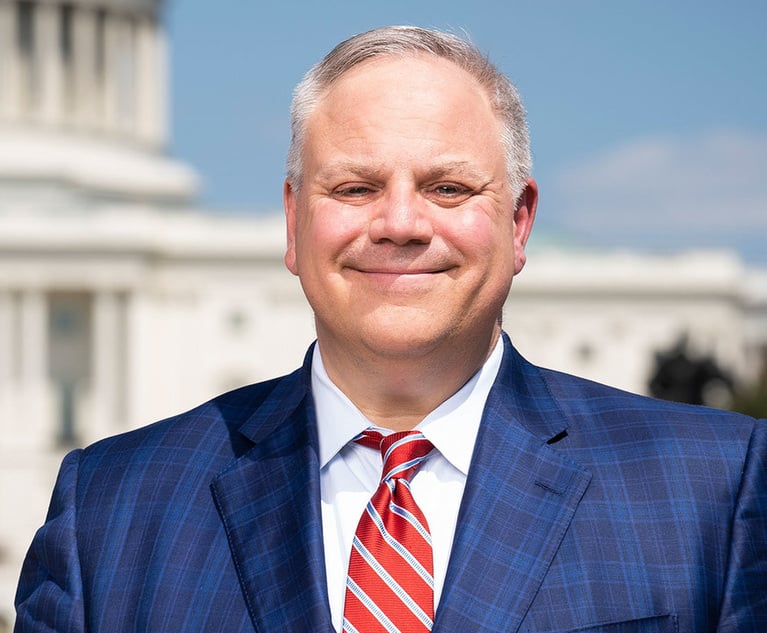Big Law Has Saturated the Biggest U.S. Cities. Where Is the Next Frontier?
From Phoenix to Nashville, large firms are now pushing into emerging markets in search of growth—and finding risks and rewards along the way.
March 02, 2020 at 05:00 AM
12 minute read

Law firms keep asking James Goodnow if Fennemore Craig is interested in a merger. Matthew Feeney at Snell & Wilmer is hearing the same offers.
So far, they haven't said yes.
It's not hard to see why competitors are interested in firms like Arizona-based Fennemore Craig and Snell & Wilmer. The firms have offices in markets like Phoenix, Denver and Las Vegas, cities that have experienced enormous population growth over the past few years.
"I think the Am Law 100 and 200 firms sense that there's opportunity, that these markets—like Phoenix, like Boise, like Las Vegas—haven't been saturated with Big Law firms," Goodnow says.
But law firms aren't just looking at the West. They've turned their eyes toward Minneapolis, where seven new firms set up shop in 2019 alone, including three major mergers. They've eyed Boston, where 15 Am Law 200 firms have opened offices since 2014. They've searched far and wide for opportunities in Texas, where dozens of firms have been flocking for decades.
These expansions—and the inquiries Goodnow and Feeney keep turning away—are a natural response to the pressures law firms are feeling from clients and competitors to be bigger and better. And they represent a shift in the way many firms are thinking that could have a dramatic influence on Big Law in the coming years.
"To the extent that in the past those markets would not have been on the radar of the firms moving in today, it represents a significant change," Ronald Nye, the managing partner of Major, Lindsey & Africa's Chicago office, says. "For the firms that find success in so doing, it very well may reorient the future of whether they enter additional markets to achieve strategic goals."
For firms seeking scale, growth has to go somewhere, and they're being picky about where. Firms are thinking about client demand, but also about a city's corporate presence, economic health and its industry strengths.
And, of course, firms are seeking to keep costs down and drive up profits whenever possible. Those with offices in higher- and lower-priced markets can funnel work originating in, say, Houston to lawyers and staffers in Chattanooga, Tennessee, and charge Houston rates for it—a compelling option for anyone thinking about the bottom line.
"If you want to build scale, you have to build it somewhere," Zeughauser Group consultant Kent Zimmermann says. "You're not going to put all of your eggs in one basket. You're not going to build all of your scale in New York or San Francisco. You're going to have scale in places that help you achieve your strategy. That's what led some firms to grow in Minneapolis or Dallas or Atlanta."
Follow the Money
Lawyers follow the money. Even as secondary and tertiary markets are being thrust into the spotlight, law firms are still interested in expanding in major legal markets like Chicago, New York, San Francisco, Los Angeles, Houston and Washington, D.C. But don't sleep on cities like Atlanta, Boston, Dallas, Minneapolis, Nashville, Seattle and the North Carolina "Research Triangle"—an area marked by Duke University, North Carolina State University and the University of North Carolina at Chapel Hill.
As growth has begun to plateau in major markets, these emerging markets are taking center stage. In the past 10 years, Am Law 200 firms have opened 104 offices in the seven aforementioned locations. A study by real estate firm CBRE identified Phoenix; Austin, Texas; Atlanta; Orlando, Florida; and Dallas/Fort Worth as the five fastest-growing markets for legal service employment.
Not every secondary market is quite so coveted. Few firms are scrambling to get into Milwaukee, says Husch Blackwell chief executive Paul Eberle, who is based there. They're also not flocking to mountain states with low population densities, says Dion Cominos, the managing partner of Gordon Rees Scully Mansukhani, which has offices in each of them.
But Eberle and Cominos aren't complaining.
Husch Blackwell's business model is built around having offices in places like Madison, Wisconsin; Omaha, Nebraska; and Chattanooga. Because of the firm's use of fixed rates and multiyear pricing, it can tap lawyers in underpriced markets to work on projects emanating from more expensive locations, Eberle says.
"We're a firm that's built of firms that have succeeded in areas that are not growth areas. That's who we are, where we're from," Eberle says.
Gordon Rees and Husch Blackwell excel in the kinds of markets that Dentons is looking to harness with its "Golden Spike" strategy. Mike McNamara, Dentons' U.S. CEO, says even calling cities like Milwaukee; Kansas City, Missouri; and Nashville secondary or tertiary legal markets is a misnomer because of the United States' enormous legal market. Clients in each of those cities spend more money on legal services than all of Sweden, Dentons says, but none of the top 10 U.S. firms have an office in any of them.
McNamara says the companies on the Russell 3000, an index of the 3,000 largest publicly traded companies in the United States, are spread well throughout the country's 100 largest legal markets.
"Someone in a market where we are today isn't going to understand Ohio and how one does business in Ohio, the regulators in Ohio, the courts in Ohio, to the same degree as someone who is local in that practice," McNamara says. "That's a critical component whenever someone is looking to do business."
For McNamara, the only limit to Dentons' strategy is not the quality of the country's legal markets, but, rather, the quality of the firms available for merger. And, as he notes, cities change over time, as do their underlying economies. He points to Pittsburgh, the home base of Cohen & Grigsby—one of two regional firms Dentons officially combined with in January—and its recent shift from being a steel city to a technology hub.
"I find it hard from experience to validate the thesis that there's a market that's less attractive than others," McNamara says.
Planting a Flag
Law firms prefer to enter a new market by merging with a local firm. But that's getting harder to do in many cities, as years of consolidation have whittled down the number of prime merger candidates. In lieu of good merger options, firms often enter with either a small group of lawyers or a small firm. Eversheds Sutherland opened its Chicago office in 2019 with a couple of laterals and one legacy partner relocating to the Windy City; weeks later, it opened its San Diego office with three intellectual property litigators from Foley & Lardner.
Leaders swear it's better to bring in an established group than a crowd of unconnected newcomers, but Mark Wasserman, Eversheds Sutherland's U.S. managing partner, says it's easier to establish cross-selling relationships with a group of new lawyers who have preexisting ties.
Other firms have become creative in their approaches. Eleven years ago, Snell & Wilmer believed it had to go into each new market "guns blazing" by opening a full-service office, Feeney says. Since then, the firm has only opened small offices. They're cheaper, and they allow Snell & Wilmer to plant a flag more quickly. The firm opened in San Diego in February, five months after a partner expressed interest in moving there.
In some cases, emerging markets aren't destinations for new law offices, but, rather, new support centers that house back-office functions or consultancy groups. Littler Mendelson opened its back-office services center in Kansas City; Baker McKenzie is opening a similar center in Tampa, Florida.
Eversheds Sutherland merged its consulting subsidiary with its corporate secretarial and volume insolvency teams, creating one entity called Konexo, which is coming to the United States soon, Wasserman says. He envisions having contract lawyers based all over the country, not just the eight U.S. cities the firm is currently in.
"We won't necessarily have Konexo offices in a city, but we'll be using talent and lawyers around the country," Wasserman says. "That is one reason why some firms have opened operations in smaller cities—because the salaries for younger lawyers are smaller than they are in New York. … There's an opportunity to leverage that for clients for certain bodies of work."
Tough Nut to Crack
Opening an office in a new market is a tough prospect all on its own. But secondary markets—especially Boston, Las Vegas, Nashville and Phoenix—may be tougher nuts to crack due to longstanding ties local firms have developed with clients, multiple law firm leaders say.
Breaking into Las Vegas was a tough prospect for Dickinson Wright, CEO Michael Hammer says. The firms that dominated the market were solely focused on their work in Las Vegas and Nevada. To get a foothold in Sin City in 2010, Dickinson Wright merged with Gibson Lowry Burris, a three-lawyer IP firm in the city. The firm's presence in Las Vegas has grown since the local heavyweights—Gordon Silver and Lionel Sawyer & Collins—both collapsed in 2015, Hammer says.
Culture can be a factor, too. Hometown pride runs strong in cities like Boston, says Jill Huse, a partner at Charlotte-based consultancy Society 54 with past ties to Boston. But Lisa Smith, a principal at Fairfax Associates, questions whether a city like Boston can be considered insulated anymore because of how many national firms have set up shop there.
The qualities that make Boston or Las Vegas tough to enter aren't unique, Wasserman says. It's hard to break into any new city. Secondary and tertiary markets are home to well-known brands just like anywhere else.
"Even if they're not national or international firms, they're known in their individual markets," Wasserman says. "To get clients, especially local clients, to be thinking of a new brand is always hard … as for lawyers wanting to take a leap and do something different, it takes a lot of time."
Points for Proximity
Every firm wants new clients, but not everyone is chasing the same stream of cash. A market like Atlanta or Minneapolis doesn't appeal to a managing partner like Feeney of Snell & Wilmer, a national firm whose offices are mostly scattered around the West.
"There are any number of firms that would love to combine with us because we have the best Western presence of any law firm," he says. "But we have resisted getting too far beyond our geographic footprint."
Feeney is a day's drive away from nearly all of his firm's offices, a level of proximity that he says builds cohesion within the firm.
The lawyers at Goulston & Storrs understand where Feeney is coming from. They're committed to their current geographic footprint of Boston, New York and D.C., director Martin Fantozzi says. Although many of the firm's clients are present on the West Coast, branching out to those markets would require changing the firm's governance structure, which Fantozzi says the firm isn't willing to do yet. Goulston & Storr's lawyers appreciate that they're all in the same time zone and within driving distance of each other, he adds. And the firm isn't afraid of missing out. Its leaders recognize what the firm isn't.
Feeney and Fantozzi both question the importance of a firm's geographical reach in an era when physical location is less important than ever.
Feeney says a number of his firm's offices were established because clients needed the firm to have an office in a particular state before they could funnel work to the firm. Meanwhile, certain kinds of work, like finance or corporate matters, are likely governed by New York or Delaware law no matter where a transaction is occurring, Fantozzi says. The only time Goulston & Storrs would need an Indiana-based lawyer is if it needed Indiana-specific help, he adds.
"You can always find a good lawyer in Indiana to help you solve that problem," Fantozzi says.
Goulston & Storrs isn't going to Indiana, but Dentons is. The other firm it combined with in January was Bingham Greenebaum Doll, an Indianapolis firm. Dentons and others are looking to expand—and they see value in Indiana and many other cities that were once Big Law afterthoughts.
"To say the legal business in the United States is only in New York or California or Chicago or Washington … is simply false and misunderstands the breadth of how legal business is done, both inbound and outbound," McNamara says. "It is a far too limited view of where companies are spending on legal services."
Email: [email protected]
This content has been archived. It is available through our partners, LexisNexis® and Bloomberg Law.
To view this content, please continue to their sites.
Not a Lexis Subscriber?
Subscribe Now
Not a Bloomberg Law Subscriber?
Subscribe Now
NOT FOR REPRINT
© 2025 ALM Global, LLC, All Rights Reserved. Request academic re-use from www.copyright.com. All other uses, submit a request to [email protected]. For more information visit Asset & Logo Licensing.
You Might Like
View All

Three Akin Sports Lawyers Jump to Employment Firm Littler Mendelson

Brownstein Adds Former Interior Secretary, Offering 'Strategic Counsel' During New Trump Term
2 minute read
Law Firms Mentioned
Trending Stories
- 1How ‘Bilateral Tapping’ Can Help with Stress and Anxiety
- 2How Law Firms Can Make Business Services a Performance Champion
- 3'Digital Mindset': Hogan Lovells' New Global Managing Partner for Digitalization
- 4Silk Road Founder Ross Ulbricht Has New York Sentence Pardoned by Trump
- 5Settlement Allows Spouses of U.S. Citizens to Reopen Removal Proceedings
Who Got The Work
J. Brugh Lower of Gibbons has entered an appearance for industrial equipment supplier Devco Corporation in a pending trademark infringement lawsuit. The suit, accusing the defendant of selling knock-off Graco products, was filed Dec. 18 in New Jersey District Court by Rivkin Radler on behalf of Graco Inc. and Graco Minnesota. The case, assigned to U.S. District Judge Zahid N. Quraishi, is 3:24-cv-11294, Graco Inc. et al v. Devco Corporation.
Who Got The Work
Rebecca Maller-Stein and Kent A. Yalowitz of Arnold & Porter Kaye Scholer have entered their appearances for Hanaco Venture Capital and its executives, Lior Prosor and David Frankel, in a pending securities lawsuit. The action, filed on Dec. 24 in New York Southern District Court by Zell, Aron & Co. on behalf of Goldeneye Advisors, accuses the defendants of negligently and fraudulently managing the plaintiff's $1 million investment. The case, assigned to U.S. District Judge Vernon S. Broderick, is 1:24-cv-09918, Goldeneye Advisors, LLC v. Hanaco Venture Capital, Ltd. et al.
Who Got The Work
Attorneys from A&O Shearman has stepped in as defense counsel for Toronto-Dominion Bank and other defendants in a pending securities class action. The suit, filed Dec. 11 in New York Southern District Court by Bleichmar Fonti & Auld, accuses the defendants of concealing the bank's 'pervasive' deficiencies in regards to its compliance with the Bank Secrecy Act and the quality of its anti-money laundering controls. The case, assigned to U.S. District Judge Arun Subramanian, is 1:24-cv-09445, Gonzalez v. The Toronto-Dominion Bank et al.
Who Got The Work
Crown Castle International, a Pennsylvania company providing shared communications infrastructure, has turned to Luke D. Wolf of Gordon Rees Scully Mansukhani to fend off a pending breach-of-contract lawsuit. The court action, filed Nov. 25 in Michigan Eastern District Court by Hooper Hathaway PC on behalf of The Town Residences LLC, accuses Crown Castle of failing to transfer approximately $30,000 in utility payments from T-Mobile in breach of a roof-top lease and assignment agreement. The case, assigned to U.S. District Judge Susan K. Declercq, is 2:24-cv-13131, The Town Residences LLC v. T-Mobile US, Inc. et al.
Who Got The Work
Wilfred P. Coronato and Daniel M. Schwartz of McCarter & English have stepped in as defense counsel to Electrolux Home Products Inc. in a pending product liability lawsuit. The court action, filed Nov. 26 in New York Eastern District Court by Poulos Lopiccolo PC and Nagel Rice LLP on behalf of David Stern, alleges that the defendant's refrigerators’ drawers and shelving repeatedly break and fall apart within months after purchase. The case, assigned to U.S. District Judge Joan M. Azrack, is 2:24-cv-08204, Stern v. Electrolux Home Products, Inc.
Featured Firms
Law Offices of Gary Martin Hays & Associates, P.C.
(470) 294-1674
Law Offices of Mark E. Salomone
(857) 444-6468
Smith & Hassler
(713) 739-1250









